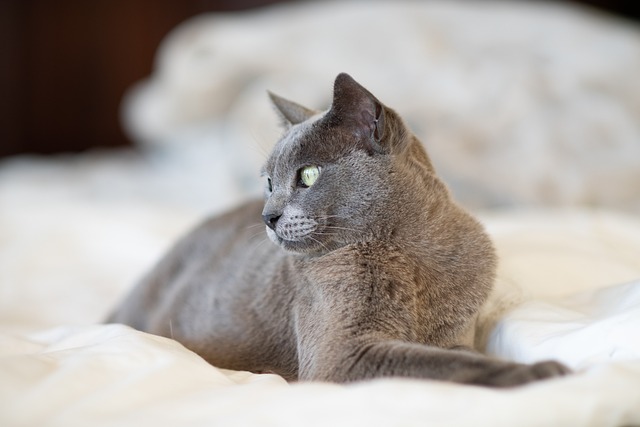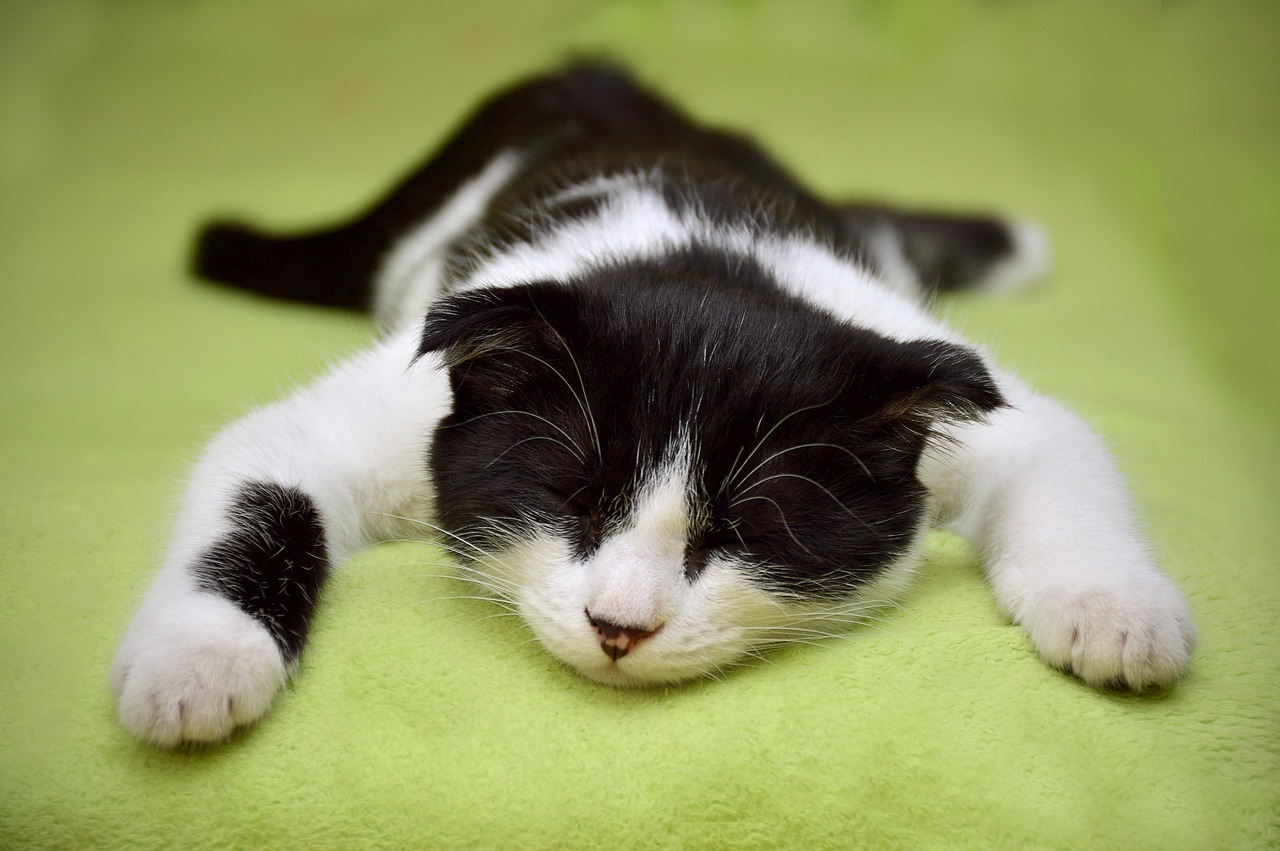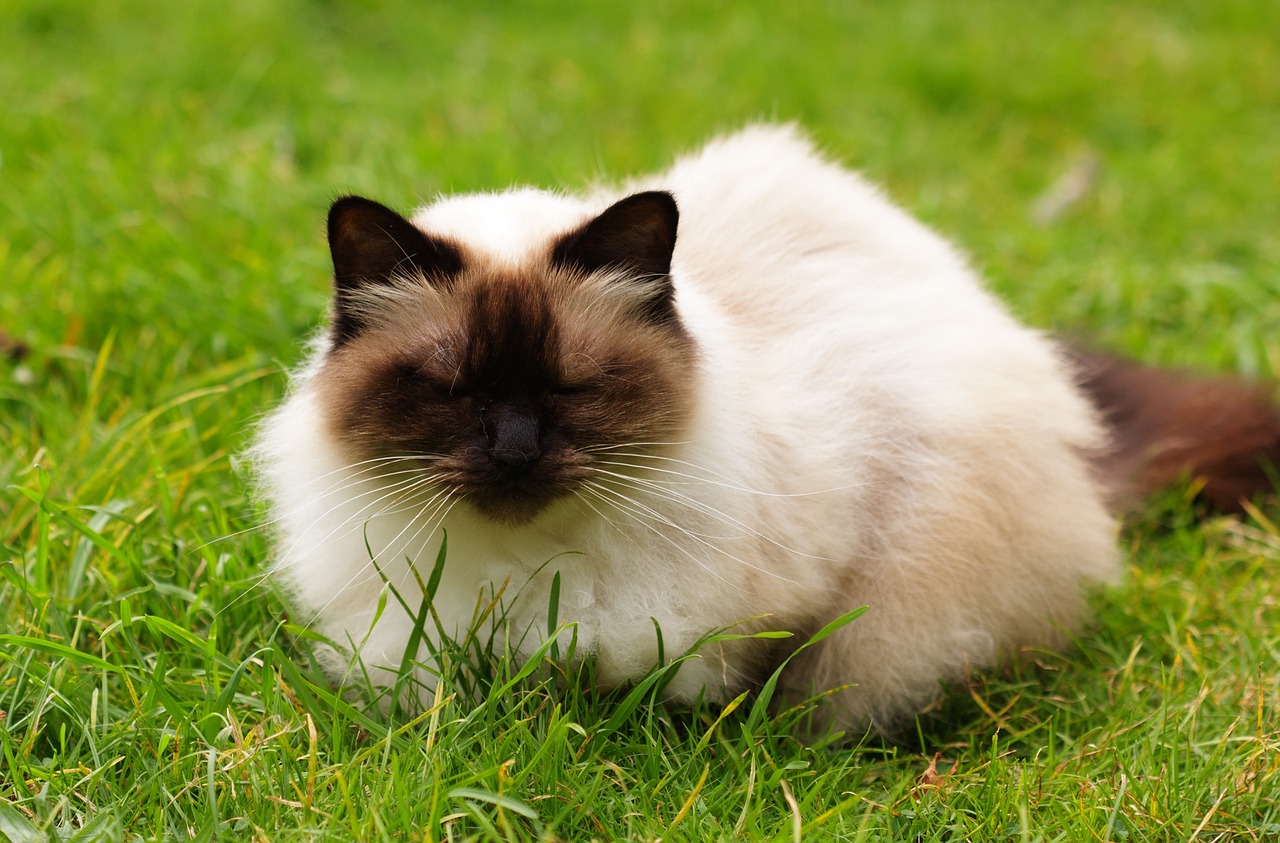Do you love cats but they make your allergies work overtime? Or have you always wanted a cat but your sinuses are just keeping you wrong? Don’t fear, here are 14 hypoallergenic cat breeds for people with cat allergies. The reason why some breeds are to be considered hypoallergenic is because they have less hair. They shed less and they have less dandruff, which results in a reduced number of allergens in the environment.
REMEMBER: Just because a cat is hairless doesn’t mean it’s automatically a hypoallergenic cat. The main allergen in cats is not its fur but rather a glycoprotein known as FEL D1, found mainly in the saliva of cats. When a cat grooms itself FEL D1 is left all over its fur. So the furrier the cat the more hair that gets left around the house and spreads the allergens around. The cats that don’t have fur still possess FEL D1 in their saliva but since they don’t have hair they don’t spread it around the home quite so much.
1. Oriental Shorthair Cat
Oriental Shorthair cat is one of the best hypoallergenic cats. Closely related to the Siamese cat, the oriental shorthair cat breed has concise hair and they shed minimally. They need less grooming and they do a great job of grooming themselves. The oriental shorthair cats are highly intelligent and friendly, although they do like to maintain a level of independence. They are also very active and want to climb the trees and fences. They love spending time outdoors.
2. Aussie Cat
While their spotted pattern resembles that of a wild cat. The Aussie cat has an affectionate domestic temperament that makes them popular among families throughout the world. Aussie cats prefer lying in the laps rather than alone on the couch and they don’t hesitate to let their owners know when they think they are not getting enough attention. The Aussie cat has short shimmery hair with minimal shedding makes it a hypoallergenic cat and the perfect pet for people who suffer from allergies.
3. Cornish Rex
The cornish rex is a unique cat breed that only has an undercoat referred to as down. It’s super soft very fine and almost curly with only one of the normal three layers of hair in the cat’s coat. Cornish rex’s minimal shedding makes it a hypoallergenic cat and a good option for cat lovers who are suffering from allergies. These cats are known for losing their undercoats, however resulting in bald spots as they age which can make them look a little funny. Still, they are loving and affectionate cats, who don’t mind spending their time inside the house.
4. Colourpoint Shorthair
These cats seem to read their owner’s mind and just instinctively know when it’s a bad day. They enjoy spending their time with other cats and they don’t seem to mind being around well-behaved dogs. Their short skinny coat requires brushing once a week and they seem to shed a lot less than long-haired cats.
5. Sphynx Cat
The sphynx cat is one of the most famous hypoallergenic cats, this hairless cat can have leathery skin that isn’t soft or rough to the touch. With no hair to shed off, the Sphynx cat is the perfect companion for people with allergies. Sphynx cat would rather spend their time inside rather than outside and they might need some jerseys and soft blankets when winter times rolls around. The Sphynx cat also likes to talk but not as much as the infamous talking Siamese cats.
6. Burmese Cat
The Burmese cat is originated from Burma. They have a soft glossy coat, which is soft almost like a satin to the touch. With minimal shedding, Burmese cats are also hypoallergenic cats and make a great pet for people with allergies. The Burmese cat remains kitten-like as they get older. They easily get attached to their owners and they dislike being left home alone. Burmese cats can also get quite vocal if there’s a lot of action happening, which can be problematic for busy families and households including kids
7. Russian Blue Cat
The Russian blue cat is a hypoallergenic cat that has bright green eyes and low grooming needs. They have thick furry coats but they don’t produce as much of the allergens FEL D1 as other cats. Which helps them be hypoallergenic. Russian blue cat has a serious look but a playful attitude and a very good sense of humour. They love humans no matter their age, from infants to the elderly.
8. Siamese Cat
The Siamese cat is an Asian cat breed that has an elongated body that is strong yet elegant. Siamese cats are well known for meowing all the time day and night. Their short fur makes life easy for people with allergies and their piercing blue eyes demand attention. The Siamese cat has a very social personality might get them in trouble with family members who are trying to sleep. But in general, Siamese cats are quite respectful of boundaries.
9. Bengal Cat
The Bengal cat is the product of breeding the wild Asian leopard cat with domestic cats. The scientific name of the Asian leopard cat is Prionailurus bengalensis, hence how Bengal cats got their name. However potential owners can be raised assured this breed is completely domesticated. Unlike most cats, Bengal cats enjoy spending time in water, whether it’s in the form of a pond or a faucet. They have a great deal of energy so they need lots of interactive toys and stimulation especially If they are going to be kept inside.
10. LaPerm
These cute cats have curly hair due to a genetic mutation. Hypoallergenic cats due to little shedding and a youthful playful look, which is needed because their personality closely resembles these characters. The Laperm can weigh anywhere between 5 to 10 pounds and they love heights. So they can be found on trees outside. They have a very social personality which means they won’t run and hide whenever guests come over.
11. Balinese Cat
The Balinese cat has an athletic body and a soft coat that is a joy to snuggle with. Balinese cats are playful, loyal and friendly to Other cats and humans. They are not as independent as other cat breeds are. So they ideally need to live in a household where there’s going to be someone around most of the time.
12. Javanese
Many people compare the Javanese to the Siamese in terms of looks and personality. These cats will follow their family members around the house and meow to communicate more often than most people would like. Javanese cats are extremely food-motivated which makes it easy to train them with treats. But their love of food could easily result in obesity, so they shouldn’t be offered an unlimited supply of food throughout the day. Rather stick to a schedule of meal times.
13. Devon Rex
Devon rex breed is born with many different coat colours but their hair is fine and fragile, so it should never be brushed or combed. Even over-patting could cause hair damage. Devon rex like to clown around and they’d happily join In on any social gatherings at home. The Devon rex breed purrs any time they get attention and they’d never pass an opportunity to sunbathe.
14. Siberian Cat
As the name suggests Siberian cat breed hailed from the frigid climate of Siberia. These cats yearn to spend most of their time outside and they have a high prey drive which makes them excellent hunters. The Siberian cats typically get along well with other animals like dogs, other cats and even ferrets. They aren’t that needy and they don’t mind spending time on their own.
Summary of Hypoallergenic Cat Breeds
In conclusion, hypoallergenic cat breeds offer a wonderful solution for allergy-prone cat lovers. These feline companions can bring joy without the discomfort of allergies. From the playful Siberian to the elegant Siamese, there’s a hypoallergenic breed to suit every preference. Remember to spend time with your chosen breed before adoption to ensure a good match, ensuring a happy and healthy life for both you and your hypoallergenic cat.
ALSO READ: The 12 Most Popular Cat Breeds Among Cat Enthusiasts
Frequent Asked Questions
Popular hypoallergenic cat breeds include the Siberian, Balinese, Sphynx, and Siamese. These breeds are known for producing fewer allergens.
You can undergo allergy testing, which may include skin tests or blood tests, to determine if you’re allergic to cats. It’s advisable to do this before bringing a cat into your home.
Hypoallergenic cats may require regular grooming to reduce the spread of allergenic proteins. Brushing and bathing can help. Additionally, keeping the home clean and using air purifiers can further reduce allergen exposure.
No, hypoallergenic cat breeds produce fewer allergenic proteins in their saliva, skin, and urine, but they are not entirely allergy-free. Allergic reactions can still occur but tend to be milder in comparison to non-hypoallergenic breeds.
Hypoallergenic in the context of cat breeds means that these cats are less likely to cause allergic reactions in individuals who are typically allergic to cats. This doesn’t mean that these breeds are entirely allergen-free, but they produce less allergens.



